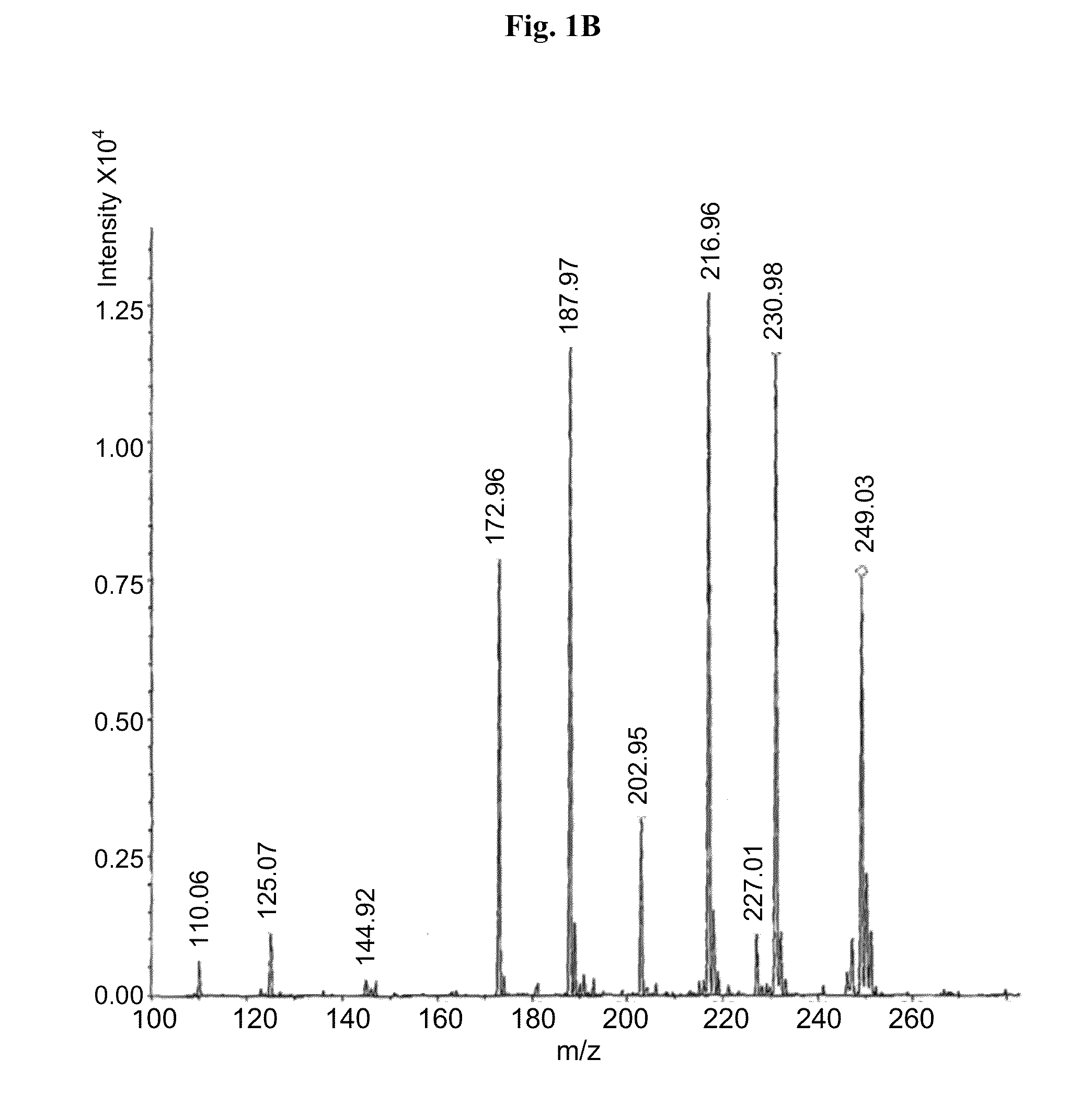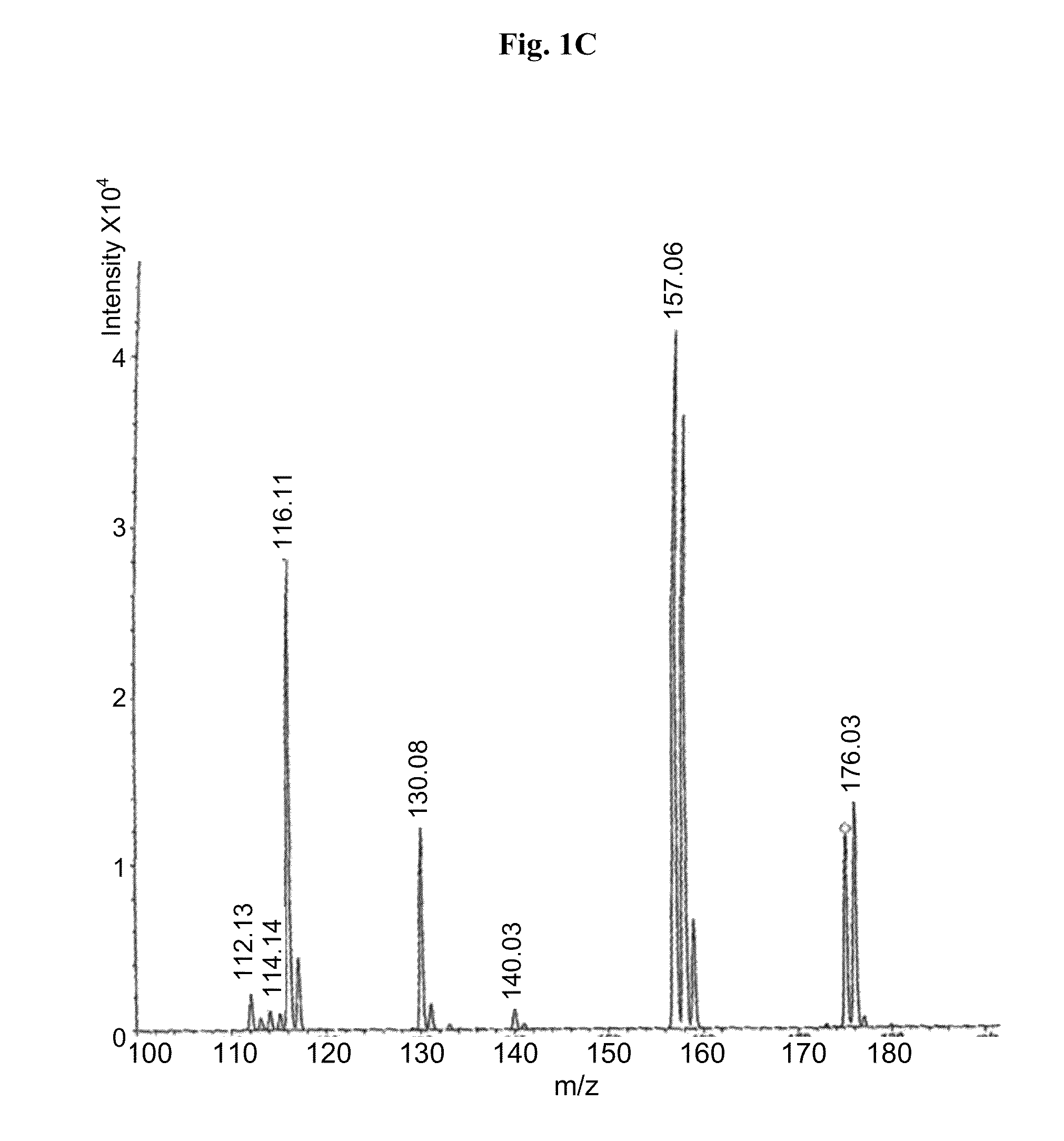Continuous administration of dopa decarboxylase inhibitors and compositions for same
a technology of decarboxylase and composition, which is applied in the direction of drug composition, biocide, muscular disorder, etc., can solve the problems of complex long-term therapy, no more efficacy of preparations than standard tablets, and inability to maintain so as to increase the half-life of levodopa and inhibit the activity of decarboxylas
- Summary
- Abstract
- Description
- Claims
- Application Information
AI Technical Summary
Benefits of technology
Problems solved by technology
Method used
Image
Examples
example 1
Preparation and Characterization of Carbidopa-Arginine Salt
[0063]Carbidopa-Arginine salt was prepared as follows:
[0064]Carbidopa (CD) [Teva Pharmaceuticals Ltd., Israel] was weighed in a suitable container with L-arginine [Merck] (at molar ratio of 1:1) and a 0.2% sodium bisulfite [Sigma] solution in water was added to obtain a final concentration of 4.0% carbidopa. The mixture was heated to 65±10° C. with constant stirring. When the solids were completely dissolved, solution was filtered using 0.45 μM nylon membrane. The filtered solution was immediately frozen in dry ice and subsequently subjected to lyophilyzation. Off-white crystals were obtained and subsequently subjected to MS analysis. The MS analytical results clearly showed carbidopa and L-arginine ions and fragments (FIG. 1a ). Peak 249 represents carbidopa+Na (226+23) with fragments: 227, 188 & 144 (FIG. 1b); Peak 176 represents arginine+2H (174+2) with fragments: 157,130 & 116 (FIG. 1c).
example 2
Preparation of Carbidopa Solution / Formulation for Subcutaneous Administration
[0065]A 4% Carbidopa solution / formulation was prepared as follows:
[0066]Carbidopa [Assia Ltd., Israel] was weighed in a suitable container and water was then added to obtain 73% of the total projected batch weight. Mixture was stirred at room temperature for 20 minutes. L-Arginine [Sigma] was added to the mixture to obtain a molar ratio 1:1 with carbidopa. The mixture was heated to 65±10° C. with constant stirring. When the solids were completely dissolved, N-methyl 2-pyrrolidone [Pharmasolve, ISP] was added to obtain the final concentration of 10% (w / w). Sodium bisulfite [Sigma] solution was prepared and added to obtain a final concentration of 1% (v / w). Stirring was continued for additional 30 minutes at 65±3° C. Thereafter, PVP [Polyvinylpyrrolidone, Sigma] solution was prepared and added to obtain a final concentration of 1% (v / w). Stirring was continued for 30 minutes at 65±3° C. Heating was stopped an...
example 3
Preparation of Carbidopa Solution / Formulation for Subcutaneous Administration
[0068]A 6% Carbidopa solution / formulation was prepared as follows:
[0069]Carbidopa [Teva] and L-arginine [Merck] (molar ratio 1:1.1) were weighed in a suitable container and water was then added to obtain 84% of the total projected batch weight. N-methyl 2-pyrrolidone [Pharmasolve, ISP] was added to obtain the final concentration of 5% (w / w) Sodium bisulfite [Sigma] solution was prepared and added to obtain a final concentration of 0.1% (v / w). The mixture was heated to 65±10° C. with constant stirring. When the solids were completely dissolved heating was stopped and the preparation was allowed to cool down to room temperature. Solution was filtered using a sterile 0.22 μM PVDF membrane.
PUM
| Property | Measurement | Unit |
|---|---|---|
| pH | aaaaa | aaaaa |
| molar ratio | aaaaa | aaaaa |
| temperature | aaaaa | aaaaa |
Abstract
Description
Claims
Application Information
 Login to View More
Login to View More - R&D
- Intellectual Property
- Life Sciences
- Materials
- Tech Scout
- Unparalleled Data Quality
- Higher Quality Content
- 60% Fewer Hallucinations
Browse by: Latest US Patents, China's latest patents, Technical Efficacy Thesaurus, Application Domain, Technology Topic, Popular Technical Reports.
© 2025 PatSnap. All rights reserved.Legal|Privacy policy|Modern Slavery Act Transparency Statement|Sitemap|About US| Contact US: help@patsnap.com



